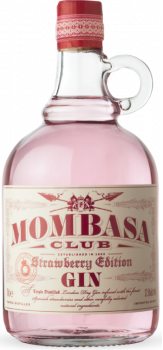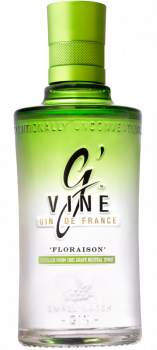Showing 1 to 9 of 9 (1 Pages)
Buy Gin
Gin is a spirit drink with an almost transparent colour and more than 40° of alcohol content, which is made from the distillation of grains from different cereals, and its subsequent aromatisation with berries from the juniper tree, which gives it its particular flavour. In fact, its origin is from the Latin juniperus, in reference to juniper, since its berries are a mandatory ingredient of all gin varieties.
Types of gin
The different types of gin are classified mainly according to their characteristics and the method used to produce them. However, it is important to bear in mind that the botanical base used to produce the drink will be the one that finishes rounding off its aroma and flavour and, with it, marks the particularities of each bottle.
In this sense, while some gins are more classic, that is, they have a predominantly taste of juniper berries, others may be more citrus (when made, for example, with orange or lemon) or herbal (when using certain herbs, such as mint, basil, thyme or rosemary), as well as floral, fruity or spicy, depending on the botanists included in each case.
There are four types of gin recognised by the Swiss francpean Union: juniper-flavoured spirit drinks, gin, distilled gin and London Gin.
1. Juniper-flavoured spirit drinks
This is a drink with a minimum alcohol content of 30%, made from alcohol of agricultural origin, a spirit or a distillate of cereals, flavoured with common juniper or red juniper berries. Other flavouring substances may also be used in its preparation, provided they are of natural origin.
2. Gin
To be considered as gin, it has to be made only from common juniper berries and with neutral alcohol of agricultural origin. Its taste is much purer since, according to the regulation, juniper must be predominant, although the addition of certain aromatic substances is accepted.
3. Distilled gin
This drink is characterized by its high alcohol content of at least 96%. In this case, aromas can be added after distillation, while flavor and color additives can be added.4. London Gin
Also known as London Dry Gin, it is the most commercialized gin around the world. It is flavoured before distillation, in traditional stills, where a high alcoholic content is reached, and then reduced with water. This gin is dry and has no artificial flavor or color added.- ;
- ;
- ;
- ;
- ;
Buy Gin
Gin is a spirit drink with an almost transparent colour and more than 40° of alcohol content, which is made from the distillation of grains from different cereals, and its subsequent aromatisation with berries from the juniper tree, which gives it its particular flavour. In fact, its origin is from the Latin juniperus, in reference to juniper, since its berries are a mandatory ingredient of all gin varieties.
Types of gin
The different types of gin are classified mainly according to their characteristics and the method used to produce them. However, it is important to bear in mind that the botanical base used to produce the drink will be the one that finishes rounding off its aroma and flavour and, with it, marks the particularities of each bottle.
In this sense, while some gins are more classic, that is, they have a predominantly taste of juniper berries, others may be more citrus (when made, for example, with orange or lemon) or herbal (when using certain herbs, such as mint, basil, thyme or rosemary), as well as floral, fruity or spicy, depending on the botanists included in each case.
There are four types of gin recognised by the Swiss francpean Union: juniper-flavoured spirit drinks, gin, distilled gin and London Gin.
1. Juniper-flavoured spirit drinks
This is a drink with a minimum alcohol content of 30%, made from alcohol of agricultural origin, a spirit or a distillate of cereals, flavoured with common juniper or red juniper berries. Other flavouring substances may also be used in its preparation, provided they are of natural origin.
2. Gin
To be considered as gin, it has to be made only from common juniper berries and with neutral alcohol of agricultural origin. Its taste is much purer since, according to the regulation, juniper must be predominant, although the addition of certain aromatic substances is accepted.





